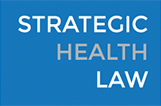Recent Cigna Settlements Increase Compliance Stakes for MA Organizations’ Risk Adjustment Programs

By Sandra Durkin
In recent years, sustained oversight and enforcement by the federal government has made risk adjustment (RA) a top compliance priority for Medicare Advantage (MA) organizations. Complete and accurate coding of member conditions is critical for MA plan success. A plan that undercodes (fails to capture member conditions that impact treatment) will not have sufficient resources to manage the care of its members, while a plan that overcodes (submits unsupported diagnoses to the government) faces potentially devastating legal risk.
The recent Cigna settlements show that scrutiny of MA risk adjustment practices shows no signs of letting up, and that MA organizations must remain vigilant in overseeing their RA programs. On September 29, 2023, the Department of Justice (DOJ) announced that Cigna agreed to pay $172 million to resolve allegations of fraud asserted by two U.S. Attorney’s Offices as well as a qui tam relator. As part of the settlements, Cigna also agreed to enter into a five-year corporate integrity agreement (CIA) with the Office of Inspector General for the U.S. Department of Health and Human Services (HHS-OIG).
Alleged Misconduct
By way of background, the relator, a former officer of one of the vendors Cigna used to complete in-home health risk assessments, first filed suit against Cigna in 2017. The allegations were unsealed in August 2020 following three years of investigation. The relator alleged that Cigna violated the False Claims Act (FCA) by submitting false risk adjustment claims to CMS resulting in $1.4 billion in overpayments from 2012 to 2017.
The lawsuit focused on Cigna’s in-home health risk assessment (HRA) program and alleged that the program was designed for the express purpose of finding health conditions that would raise risk scores and increase payments from CMS. Among other allegations, the relator contended that Cigna incentivized the providers conducting the health assessments to find as many diagnoses as possible – and that the diagnoses underlying the claims ultimately submitted to CMS were unreliable and not supported by clinical medical records.
Although the DOJ initially declined to intervene in the relator’s allegations, it ultimately filed its own complaint in October 2022 alleging that numerous aspects of Cigna’s risk adjustment program violated the FCA and seeking damages for overpayments for payment years 2014 to 2019. In particular, the DOJ alleged that Cigna submitted invalid diagnoses of serious, complex medical conditions that: (a) were based only on home visits; (b) required specific testing or imaging to be diagnoses, which was not performed; and (c) were not reported to Cigna by any other healthcare provider during the year.
In addition to its claims in the relator lawsuit (in the Middle District of Tennessee), the DOJ asserted other allegations relating to Cigna’s risk adjustment program arising from an investigation based out of the Eastern District of Pennsylvania. As a result of that investigation, the DOJ alleged that:
- Cigna operated a one-way chart review program—i.e., conducted retrospective reviews of medical records to collect previously un-identified diagnoses but failed to withdraw unsupported diagnoses; and
- Cigna submitted inaccurate diagnoses codes for morbid obesity that were not substantiated by the BMI in medical charts.
Settlement and CIA
Cigna entered into two separate settlements, totaling $172,294,350, to resolve the allegations of misconduct in the operation of its risk adjustment program. $37 million of the total settlement corresponds to the allegations relating to Cigna’s HRA program that was the subject of the relator lawsuit (with $8,140,000 going to the whistleblower). In the public settlement agreement, Cigna made a number of admissions, including that (a) Cigna did not require its HRA vendor to have equipment available to conduct certain diagnostic testing, (b) notwithstanding that Cigna’s own diagnostic criteria states that clinical assessment of some diagnoses on the HRA form require laboratory evaluation, diagnostic imaging, or other diagnostic testing to make a diagnosis for the first time, and (c) the HRA forms did not reflect the necessary diagnostic testing.
The rest of the settlement amount covers allegations arising from the investigation in the Eastern District of Pennsylvania, with Cigna paying $115,794,350 to resolve the chart review claims and $19,500,000 to resolve the morbid obesity claims. Cigna did not make any admissions of fact relating to these claims in the settlement agreement.
As a condition of the settlements, Cigna agreed to cooperate with ongoing investigation of individuals and entities not covered by the settlement, including encouraging former directors, officers, and employees to provide testimony and documents related to the covered conduct. Cigna is also subject to a five-year CIA with HHS-OIG, which requires robust auditing measures, including annual risk assessments and other monitoring, and oversight by an independent review organization that will conduct audits of Cigna’s risk adjustment data.
Practical Takeaways for MA Organizations
Risk adjustment remains an area of significant government scrutiny. In this heightened risk environment, MA organizations should be mindful not only of their significant compliance obligations but also of the likelihood that current or potential relators may be working in their ranks or for their vendors.
Practical next steps for MA organizations to manage risk in this environment include:
- Educating MA organization leadership regarding the Cigna settlement (e.g., cooperation, limited liability release) and scope of CIA (increased oversight) and potential impact on an MA organization;
- Establishing a top-down culture of compliance with lines of communication for employees, providers, and vendors to report concerns related to RA program;
- Establishing and maintaining privilege over internal risk adjustment investigations when appropriate;
- Developing processes for effectively responding to internal and external questions related to risk adjustment in a manner that prioritizes compliance while allowing the MA organization to maintain privilege; and
- Evaluating RA program policies, procedures, and practices and implementing changes to ensure alignment with organizational risk tolerance in the current enforcement environment.




